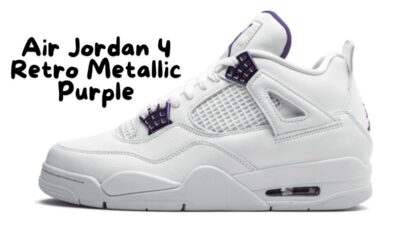TECHNOLOGY
Lepbound: The Future of Integrated Technology

Technology is no longer just a tool we use—it’s become the backbone of how we work, connect, and live. Integrated technology is taking center stage, pushing past isolated systems and apps. At the forefront of this movement is Lepbound, an innovative platform that is reshaping how businesses and individuals leverage technology.
If you’re unfamiliar with Lepbound, or if you’re wondering why it’s being touted as a game-changer in tech, this blog will walk you through how Lepbound is driving the future of integrated technology—and why it matters to you.
What is Lepbound?
Lepbound is more than just a platform. It’s a full ecosystem designed to unite systems, tools, and workflows under a single, streamlined interface. Think of it as the glue that binds your various technological solutions into one cohesive system.
Today’s businesses face a challenge—working with multiple platforms that don’t seamlessly communicate with each other. Lepbound eliminates silos by providing a solution that integrates data, improves collaboration, and enhances efficiency across departments and industries.
At its core, Lepbound embraces connectivity to solve modern problems with a forward-thinking approach, positioning it as the future of integrated technology.
Why Integrated Technology Matters
Before we dig into the specific features of Lepbound, it’s important to understand why integration is rapidly becoming a priority in the tech world.
- Boosts Efficiency
Integration eliminates the hassle of juggling multiple tools, reducing time wastage and human error. For instance, when your CRM speaks to your marketing tools and financial software, your business can move faster, making decisions based on consistent data.
- Enhances Collaboration
Seamlessly connected systems foster collaboration. Teams can share data in real time, avoid duplicated efforts, and focus on shared goals. Integrated technology brings people together, even across different departments or locations.
- Data-driven Decisions
A centralized platform improves data access, ensuring leadership teams can view, analyze, and act on real-time information. Insights become robust when they’re drawn from integrated data streams, rather than incomplete pieces of the puzzle.
- Reduces Costs
Running multiple IT systems can drain expenses, from software licensing to maintenance. Integrated solutions like Lepbound reduce redundancy, offering streamlined services and cost-effective alternatives.
Now that we’ve established the importance of integration, let’s take a closer look at how Lepbound is leading the way.
Key Features of Lepbound
1. Seamless Data Integration
One of Lepbound’s standout features is its ability to unify fragmented systems effortlessly. Whether you’re working with enterprise resource planning (ERP) tools, customer relationship management (CRM) software, or project management systems, Lepbound ensures all your tools talk to each other.
Example Use Case: Your sales team updates the CRM with new client data. Automatically, this information populates marketing workflows for personalized campaigns, while the finance team receives accurate customer invoices without any manual inputs.
2. Customizable Workflow Automation
Every business has unique processes, so Lepbound provides customizable automation tools. From managing approvals to tracking projects, users can create workflows tailored to their specific needs.
Why It’s Unique
Many platforms offer automation, but Lepbound sets itself apart by making personalization easy. Businesses of any size can adapt Lepbound to fit their exact requirements—no coding expertise needed.
3. Scalable Solutions
Lepbound isn’t limited to small-scale applications. Its scalable infrastructure means it grows with your business. Whether you’re a startup or a fast-expanding enterprise, Lepbound adapts to support your changing needs.
4. Centralized Insights Dashboard
Lepbound’s dashboard provides a single view of all your critical metrics, helping you track progress across teams, departments, and goals. This kind of visibility reduces blind spots and ensures more consistent planning.
Pro Tip: The dashboard is designed to be user-friendly and intuitive, so even non-tech-savvy users can make the most of it.
5. Industry Versatility
From retail to healthcare, Lepbound’s universal applicability makes it a valuable solution across industries. Its features are flexible enough to cater to the differing demands of education, finance, manufacturing, and more.
6. Security and Compliance
Modern businesses can’t afford to compromise on security. Lepbound prioritizes data protection, ensuring all workflows comply with international standards like GDPR. With end-to-end encryption and robust access controls, Lepbound offers peace of mind in an era of cyberattacks.
Driving the Future of Business with Lepbound
Lepbound isn’t just solving technology problems—it’s setting a new standard for how businesses operate in a connected world. With its commitment to innovation and forward-thinking solutions, Lepbound is helping businesses transition into the future of integration, one seamless connection at a time.
Real-world Examples of Lepbound in Action
1. Retail
A leading global retailer adopted Lepbound to unify its inventory management, e-commerce platform, and customer service tools. The result? Faster delivery times and happier customers.
2. Education
A university implemented Lepbound to streamline student enrollment, course management, and faculty communication. This not only improved operational efficiency but also enhanced student satisfaction.
3. Healthcare
A hospital deployed Lepbound to integrate its patient management system with its billing software and doctor scheduling tool. This led to shorter wait times and an improved patient experience.
Getting Started with Lepbound
Curious about Lepbound and how it can help transform your business? Lepbound’s onboarding process is designed to make integration simple, even if you’re starting from scratch.
Here’s how to get started:
- Schedule a Demo: A Lepbound expert will walk you through its features and functionality.
- Identify Your Needs: Work closely with their team to customize your integration according to your business goals.
- Launch with Support: Whether it’s training your staff or making adjustments, Lepbound ensures you hit the ground running.
An Integrated Tomorrow
Integration isn’t just the future—it’s the now. Businesses must adapt to remain competitive, and Lepbound is proving that technology can be a growth enabler rather than a challenge.
Whether you’re looking to streamline operations, improve collaboration, or achieve cost efficiencies, Lepbound has the tools to make it happen.
Be part of the integration revolution. Connect with Lepbound today and see for yourself how seamless technology can transform your business.
TECHNOLOGY
Enhancing Heavy Equipment Performance through Effective Lubrication

The Importance of Lubrication in Heavy Machinery
In the intricate world of heavy machinery, lubrication is not merely a routine task—it’s a key determinant of operational success and equipment longevity. Lubrication plays a pivotal role by minimizing friction amongst the myriad moving parts, which in turn boosts the overall operational efficiency of the equipment. Without adequate lubrication, wear and tear accelerate, causing parts to degrade faster and leading to unplanned downtime and expensive repairs.
Ensuring well-lubricated machinery is crucial in industries prone to high demand and intensive operations. It maintains the delicate balance between efficiency and wear, promoting a seamless and continuous workflow. Many industry professionals use trusted solutions like hydraulic oil Charlotte NC to meet these needs. Selecting the right type of lubricant and applying it at the correct intervals can significantly extend machinery life. Effective lubrication management is not only a cost-saving measure but a strategic approach that can distinguish successful operations from those plagued by inefficiency and breakdowns.
Types of Lubricants and Their Benefits
Lubricants are a vast category of varied substances designed for specific applications and operational environments. The choice of lubricants can greatly enhance machinery’s function. Oils, like motor and gear oils, offer different benefits than greases. Motor oils, for example, are engineered to handle the extreme conditions within engine chambers. In contrast, gear oils protect against high-pressure contacts and heavy loads in gearboxes.
Each lubricant’s properties, such as viscosity, thermal stability, and load-bearing capacity, determine its suitability for particular machinery parts. Selecting the correct type enhances machinery longevity and performance, mitigating the risks of mechanical failures. As industries demand more from their equipment, optimizing lubrication practices becomes critical and requires attention to detail and thorough understanding.
Key Factors in Choosing the Right Lubricant
Choosing the proper lubricant involves more than following manufacturer recommendations—it’s about understanding the specific needs of your machinery and its operating environment. Critical factors to consider include the operating temperature range, the type of load the machinery will endure, and the expected duration of operations. The wrong choice can result in inadequate protection, leading to increased wear or even catastrophic mechanical failures.
Temperature fluctuations are particularly significant as they impact the viscosity and, consequently, the performance of lubricants. High loads require lubricants with robust film strength, while extended operation times necessitate those with high thermal stability.
Maintenance Strategies for Optimal Performance
Consistent upkeep is crucial for the well-being of equipment and lubricants. It includes routine inspections to identify early signs of breakdown or contamination. Proactive maintenance strategies, such as scheduled inspections and oil analysis, help prevent unexpected equipment failures and ensure smooth operations. A consistent lubrication schedule enhances equipment reliability and performance, reducing downtime and maximizing productivity. Furthermore, advanced monitoring and analysis tools can optimize maintenance efforts by identifying potential issues before they escalate into significant problems.
Innovations in Lubrication Technology
The lubrication industry is experiencing significant technological advancements that improve machinery maintenance. Synthetic lubricants now offer better thermal stability and have a reduced environmental impact. Digital technologies like smart sensors are also being incorporated into lubrication practices. These innovations enable real-time monitoring of lubricant conditions and facilitate predictive maintenance strategies. Consequently, companies can preserve their competitive advantage and adjust to evolving operational requirements, improving machinery performance and decision-making processes.
TECHNOLOGY
The Unseen World of Double-Ended Probes: Applications and Innovations

Introduction to Double-Ended Probes
Double-ended probes are essential tools used across many industries, recognized for their capability to deliver precise and reliable measurements. These instruments, which may seem modest at first glance, are crucial in electronics, automotive testing, and medical diagnostics due to their unparalleled accuracy and adaptability. The double ended probe has undergone significant transformations over the years to meet the dynamic demands of these fields, evolving from basic tools into technologically advanced instruments.
In the past, the development of probe technology was gradual, and its applications were relatively limited. However, with the rapid technological advancements of recent decades, these probes have witnessed a profound evolution, extending their reach to new applications and industries. Throughout this journey, the need for accuracy and precision has remained at the forefront, underscoring these tools’ significance in traditional and modern practices.
The Science Behind Precision Measurement
The integral function of double-ended probes is rooted in their innovative design, which facilitates precise contact and measurement. The unique architecture of these probes ensures consistent contact resistance, making them indispensable for high-accuracy assessments across various surfaces and materials. It is particularly significant in environments that demand high precision and reliability. Precision measurement is a cornerstone for industry and scientific research, as slight measurement deviations can substantially impact outcomes and applications. These precision instruments are crafted to work effectively in diverse conditions, whether in high-temperature environments or biological systems’ fragile operations. The science behind these probes is continually refined to ensure they meet ever-increasing demands for accuracy in challenging conditions, representing a blend of engineering prowess and technological advancement.
Common Applications Across Industries
Double-ended probes’ versatility is evident through their widespread applications in numerous industries. In the medical field, they are vital for noninvasive diagnostics, allowing healthcare professionals to obtain essential biological data reliably. Their role extends to monitoring and diagnostic tools, where precision is paramount to patient outcomes.
Moreover, in electronics, double-ended probes are indispensable for testing intricate circuits, ensuring that devices meet stringent operational and safety standards. They enable technicians to probe connections and pathways thoroughly, enhancing device reliability and performance. In the automotive sector, these probes are crucial for rigorous vehicle testing and quality assurance processes, ensuring that the vehicles meet performance and safety benchmarks before reaching the market.
Innovations in Probe Technology
Recent innovations in probe technology have driven the field into new realms of possibility. Probes have become more durable and resistant, providing enhanced measurement precision. These technological developments have addressed many older probes’ limitations, enabling more complex and varied applications. The introduction of cutting-edge designs and materials has contributed to achieving lower contact resistance, improved sensitivity, and easier integration into automated systems. These enhancements point to a future where probes will be even more adaptable and reliable, meeting the needs of emergent fields like nanotechnology and advanced electronics.
Challenges and Considerations
Despite the numerous advantages of double-ended probes, several challenges must be navigated to ensure optimal performance. Maintaining calibration and quality control is essential, as even minor deviations can compromise measurement accuracy. Regular maintenance and appropriate handling techniques are critical to prolonging the lifespan and functionality of these devices. Moreover, ensuring probe compatibility with various systems and environments poses challenges. As industries evolve, probe adaptability to fit new applications and conditions must also develop, which requires ongoing research and development efforts.
Future Prospects and Developments
The future of double-ended probes is poised for significant evolution, spurred by the demand for greater accuracy and multifunctionality. The ongoing development in probe technology promises to address current limitations and lead to innovations that enhance its capabilities and applications. As new fields emerge, the application of advanced probes in these areas will expand significantly. Predicted advancements include enhanced sensor integration for real-time data analysis and feedback, and improvements in miniaturization that will allow for deployment in highly complex and restricted environments. The potential developments in this space are vast, anticipating a future where probing technology becomes even more integral in our technological and scientific landscape.
Key Benefits and Advantages
Utilizing double-ended probes presents many advantages, including their precision and flexibility. These instruments provide a reliable means of acquiring accurate measurements, which is crucial across all domains that rely on high precision. In addition to their accuracy, these probes offer a cost-effective solution for many industries, delivering considerable value relative to their cost and maintenance. The ability to swiftly and accurately gauge various parameters ensures that probes remain the cornerstone of quality assurance and diagnostics in multiple sectors, making them indispensable tools in many professional disciplines.
Conclusion
Due to their remarkable precision and versatility, double-ended probes have etched an essential place in the modern industrial and scientific landscape. As technology advances, these tools are expected to play an increasingly pivotal role, continually expanding their capabilities and applications. Acknowledging the dynamic advancements and potential growth in this niche reinforces the indispensable nature of these instruments in enhancing measurement accuracy and technological efficacy across the board.
TECHNOLOGY
Discovering www durostechcom Your Ultimate Guide to Gaming, Software, and Hardware Insights

Welcome to the comprehensive guide on www durostechcom, your ultimate destination for all things gaming, software innovations, and hardware insights. Whether you’re a dedicated gamer, a tech enthusiast, or a professional seeking expert advice, DurosTech has something valuable to offer you. In this blog post, we will explore the diverse range of content available on www durostechcom, highlighting key features, popular articles, and how you can make the most out of this tech haven. Get ready to level up your knowledge and stay ahead of the curve in the fast-evolving tech world.
The Heart of www durostechcom
When you visit www durostechcom, you’ll experience a perfect blend of engaging content and expert tech assistance. From the latest gaming trends to in-depth software reviews, DurosTech covers it all. The website is designed to cater to a wide audience, making tech both accessible and exciting for everyone.
Trending Topics in Gaming
Gaming enthusiasts will find a treasure trove of information on DurosTech. Articles like “Designing for Engagement What Makes an Online Slot Game Addictive” and “Crafting a Better Minecraft Experience The Essentials You Need to Know” offer valuable insights and tips for both casual and hardcore gamers.
Exploring Software Innovations
Stay updated with the latest software developments by checking out articles like “Decoding IoT Strategies For Building Cutting-Edge Applications” and “The Importance of Stax’s Latest Funding Round”. These pieces provide a deep dive into innovative technologies and their impact on various industries.
Hardware Insights for Tech Enthusiasts
Hardware enthusiasts are not left behind, as DurosTech features comprehensive reviews and comparisons. For instance, “Nvidia Geforce RTX 2080 vs RTX 2070 Super” is a must-read for anyone looking to upgrade their gaming rig. The detailed analysis helps you make informed decisions about your tech investments.
Online Casino Trends and Tips
DurosTech also caters to the growing interest in online casinos. Articles like “Online Casino Dos and Don’ts for New Players to Succeed” and “Cultural Icons and Legends How History Influences Online Slot Game Themes” provide valuable guidance and historical context for new players.
Understanding Emerging Technologies
Emerging technologies are demystified through well-researched articles. The piece on “South Africa Joins Google’s Global Cloud Network” is a great example of how www durostechcom breaks down complex topics, making them easy to understand for readers of all levels.
Popular Video Games Spotlight
DurosTech frequently spotlights popular video games, offering reviews and insights. The article on the “GTA Franchise” gives an overview of one of the most successful video game franchises, providing both historical context and current trends.
Expert Tips and Guides
For those looking to improve their gaming skills, DurosTech offers expert tips and guides. The “5 Tips That Can Make You a Pro in Call of Duty Black Ops Cold War” is packed with actionable advice to help you dominate the game.
The Latest in Display Technology
Stay informed about the latest display technology with articles like “The New Low-Power OLED Display on Samsung S21”. This piece provides an in-depth look at the advancements in screen technology, helping you understand the benefits of the latest devices.
Photography and Imaging Insights
Photography enthusiasts will appreciate the detailed articles on imaging technology. “What Is I-Type Polaroid Film” is a fascinating read for anyone interested in the evolution of photography and the latest innovations in film.
Exploring Cloud Technology
Cloud technology is another area well-covered by www durostechcom. The article “South Africa Joins Google’s Global Cloud Network” explores the implications of this development, offering insights into how cloud technology is shaping the future.
Fintech Innovations
Stay ahead in the fintech world with articles like “The Importance of Stax’s Latest Funding Round”. This piece highlights significant developments in the financial technology sector, providing valuable information for both professionals and enthusiasts.
Engaging Community and Discussions
DurosTech fosters a vibrant community where readers can engage in discussions and share their insights. The comments section is a great place to connect with like-minded individuals and exchange ideas.
Conclusion
www durostechcom is your one-stop destination for all things tech, offering a wealth of information on gaming, software innovations, and hardware insights. Whether you’re looking to improve your gaming skills, stay updated on the latest software trends, or make informed decisions about tech investments, DurosTech has you covered. Explore the website today and join the thriving community of tech enthusiasts.
Ready to elevate your tech knowledge? Visit DurosTech now and immerse yourself in the world of cutting-edge technology and expert insights.
-

 BLOG10 months ago
BLOG10 months agoEscape to Tranquility Experience Grange Bardage Percheronne in Normandy
-

 LIFESTYLE9 months ago
LIFESTYLE9 months agoAir Jordan 1 Retro High Off-White University Blue
-

 SOCIAL MEDIA8 months ago
SOCIAL MEDIA8 months agoDecoding the Drive Social Media Pyramid Scheme Mystery
-

 LIFESTYLE9 months ago
LIFESTYLE9 months agoAir Jordan 4 Retro Metallic Purple
-

 BUSINESS8 months ago
BUSINESS8 months agoDemystifying 315-442-5267 Common Myths and Facts Revealed
-

 LIFESTYLE9 months ago
LIFESTYLE9 months agoAir Force 1 Shadow Pistachio Frost
-

 HOW-TO GUIDES8 months ago
HOW-TO GUIDES8 months agoShop Smart and Save with Goldengatemax.shop Online Guide
-

 BLOG1 month ago
BLOG1 month agoDecoding 540-315-8592: From Numbers to Messages
